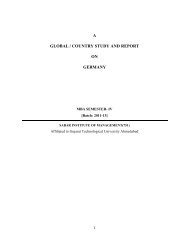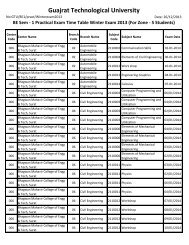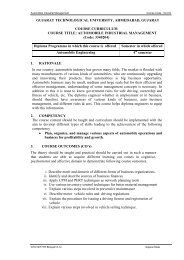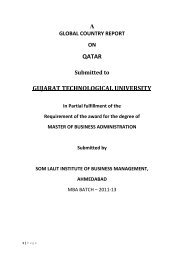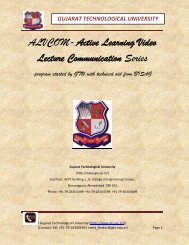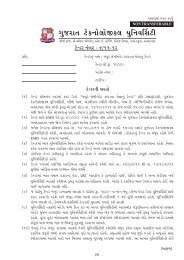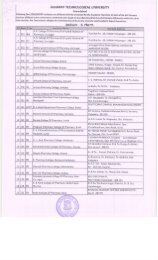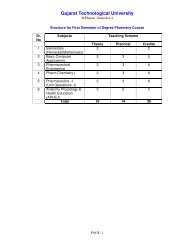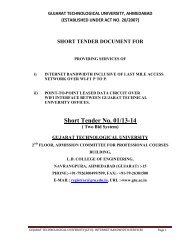708-Chaudhari Technical Institute, Gandhinagar - Gujarat ...
708-Chaudhari Technical Institute, Gandhinagar - Gujarat ...
708-Chaudhari Technical Institute, Gandhinagar - Gujarat ...
You also want an ePaper? Increase the reach of your titles
YUMPU automatically turns print PDFs into web optimized ePapers that Google loves.
TRADE POLICY OF JAPAN<br />
Export policy of Japan<br />
For many years, export promotion was a large issue in Japanese<br />
government policy. Government officials recognized that Japan needed to<br />
import to grow and develop, and it needed to generate exports to pay for<br />
those imports. After 1945, Japan had difficulty exporting enough to pay for its<br />
imports until the mid-1960s, and resulting deficits were the justification for<br />
export promotion programs and import restrictions.<br />
The belief in the need to promote exports is early strong and part of Japan's<br />
self-image as a "processing nation." A processing nation must import raw<br />
materials but is able to pay for the imports by adding value to them and<br />
exporting some of the output. Nations grow stronger economically by moving<br />
up the industrial ladder to produce products with greater value added to the<br />
basic inputs. Rather than letting markets accomplish this movement on their<br />
own, the Japanese government felt the economy should be guided in this<br />
direction through industrial policy.<br />
Japan's methods of promoting exports have taken two paths. The first was to<br />
develop world-class industries that can initially substitute for imports and then<br />
compete in international markets. The second was to provide incentives for<br />
firms to export.<br />
During the first two decades after World War II, export incentives took the<br />
form of a combination of tax relief and government assistance to build export<br />
industries. After joining the International Monetary Fund (IMF) in 1964,<br />
however, Japan had to drop its major export incentive — the total exemption<br />
of export income from taxes — to comply with IMF procedures. It did maintain<br />
into the 1970s, however, special tax treatment of costs for market<br />
development and export promotion.<br />
Once chronic trade deficits came to an end in the mid-1960s, the need for<br />
export promotion policies diminished. Virtually all export tax incentives were<br />
eliminated over the course of the 1970s. Even JETRO, whose initial function<br />
is to assist smaller firms with overseas marketing, saw its role shift toward<br />
import promotion and other activities? In the 1980s, Japan continued to use<br />
120



